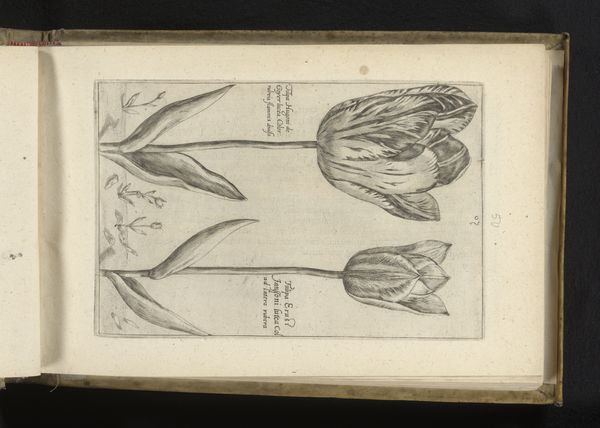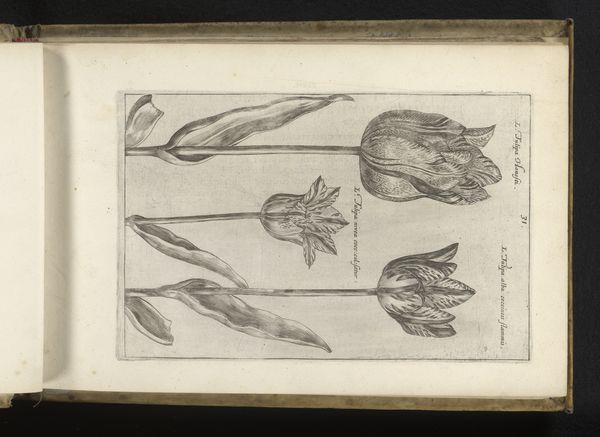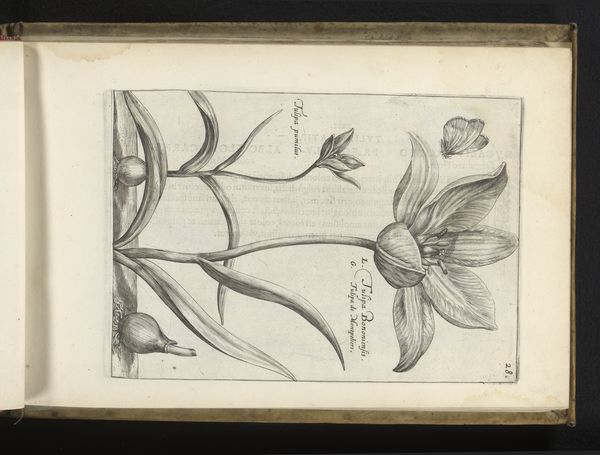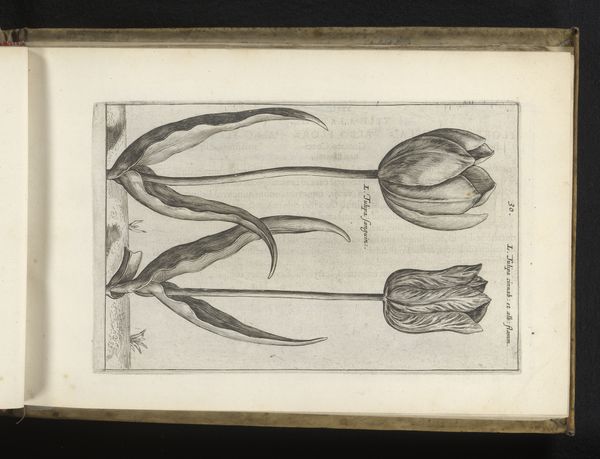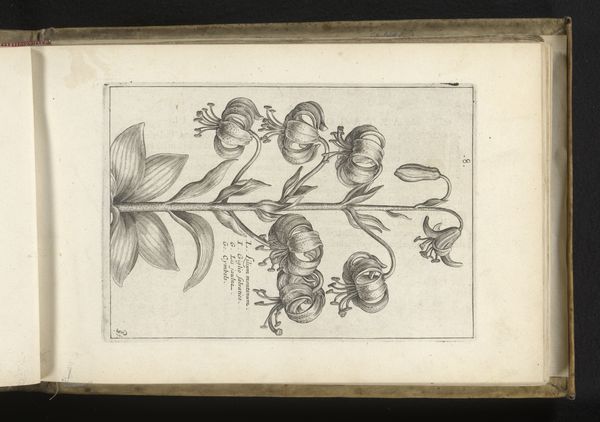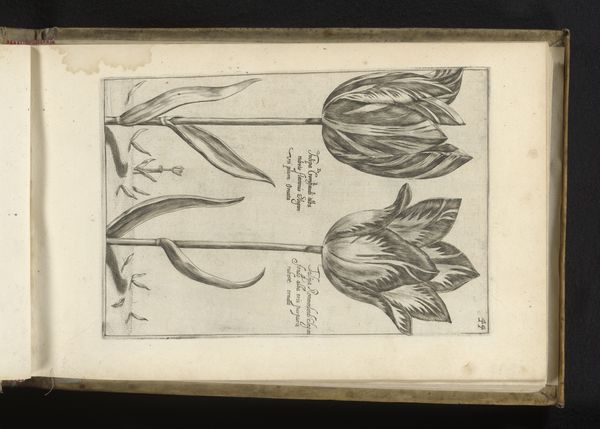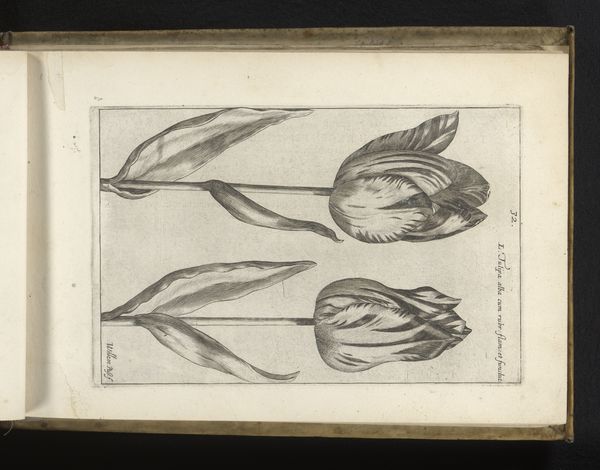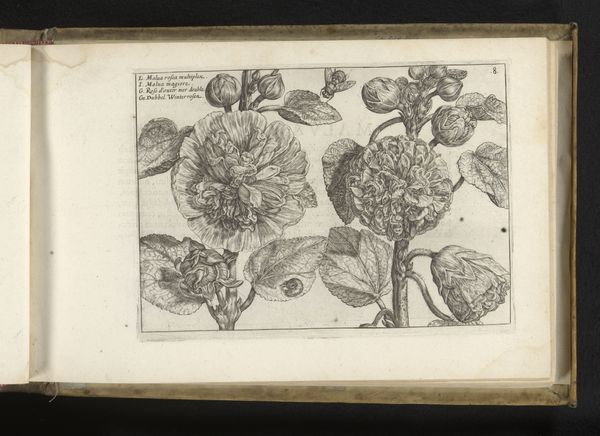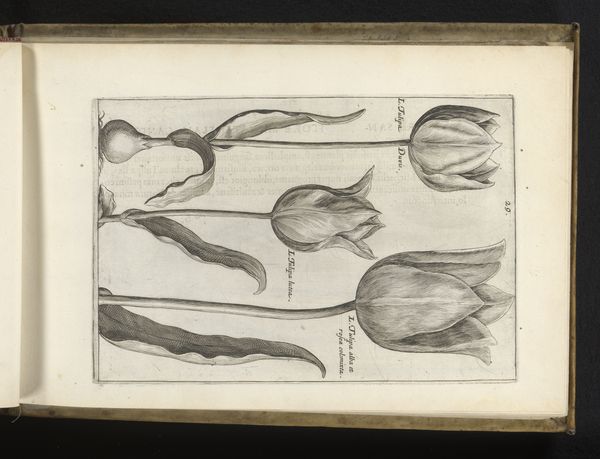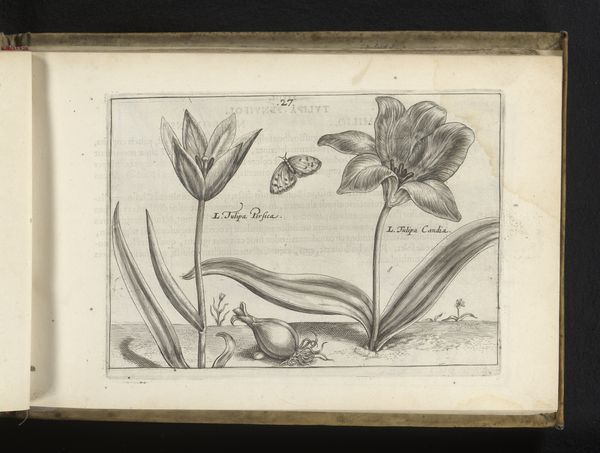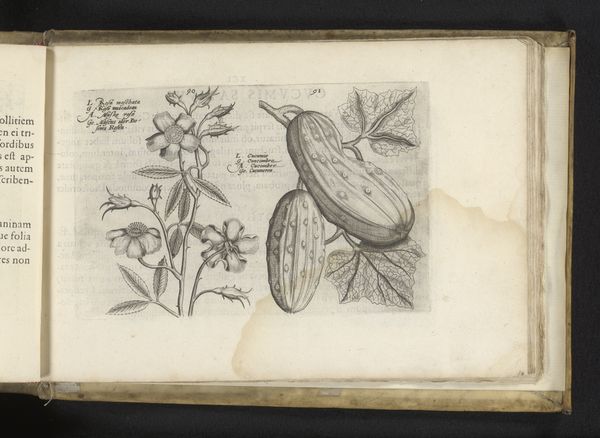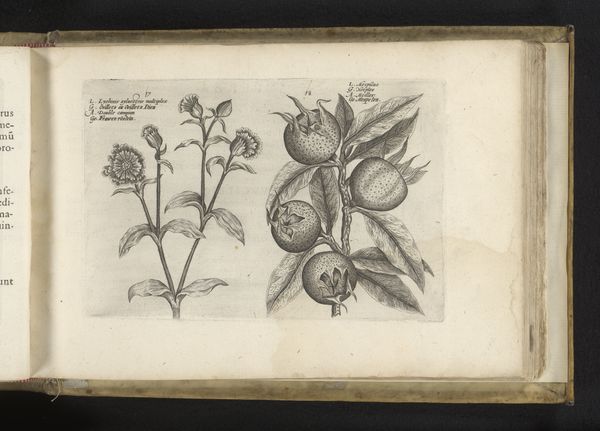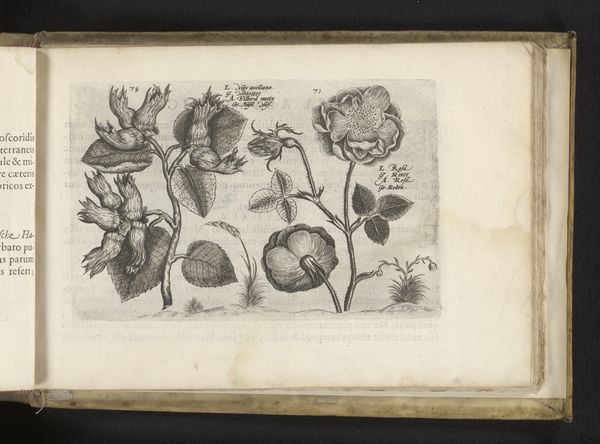
drawing, print, paper, engraving
#
drawing
# print
#
flower
#
paper
#
form
#
line
#
northern-renaissance
#
engraving
Dimensions: height 228 mm, width 137 mm
Copyright: Rijks Museum: Open Domain
Editor: Here we have Crispijn van de Passe's "Two Multicolored Tulips" from 1617. It's an engraving, and what strikes me is how detailed each petal is, despite being in black and white. What do you see in this piece? Curator: I see a potent symbol of status and wealth, reflective of the Dutch Golden Age and, specifically, "Tulip Mania." These tulips aren't just pretty flowers; they are representations of extreme financial speculation. How do you think the artist positions the tulip in the socioeconomic narrative? Editor: So, they’re like the Bitcoin of the 17th century? I never thought of flowers being political! It's interesting how meticulously they’re rendered; it’s like they are scientific specimens as well as status symbols. Curator: Exactly! Consider the power dynamics. Who had access to these rare bulbs, and who could afford to commission such detailed engravings? The tulip, normally a symbol of beauty, is here laden with implications of economic disparity and the dangers of unchecked capitalism. Do you see the beginnings of that critique here? Editor: I see what you mean! This makes me question my initial, purely aesthetic appreciation. I was focusing on the art, not the context. Curator: Context is key. What happens when we consider the image in relation to today's art market? Is there a connection between then and now? Editor: Definitely something to think about. This reframes how I look at historical artworks. Thanks! Curator: My pleasure! It's all about peeling back the layers of meaning.
Comments
No comments
Be the first to comment and join the conversation on the ultimate creative platform.

